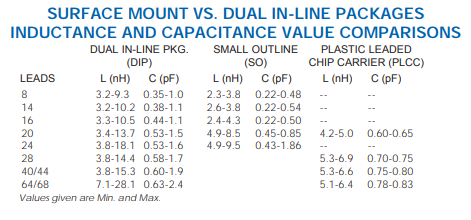Understanding Surface Mount
The main reason for the utilization of surface mount technology today is PWB area efficiency and the corresponding reduction of the system volume. Small surface mount components are used to manufacture electronic assemblies that are significantly smaller than the similar function assemblies using thru-hole components. Usually, the board area for most systems can be reduced by a factor of two for a single sided board. When components are mounted on both sides of the board, size reduction by another factor of two can be achieved. Conversely, the functional density can be doubled in the same area with the use of surface mount components. Since the height of surface mount components are generally smaller, significant reduction in system volume can also be achieved. Fewer, denser assemblies and correspondingly fewer connectors, less mechanical hardware and shorter lead lengths can yield another reduction factor of 2 to 4. Add to that the use of Application Specific IC’s (ASIC’s), and a total volume amounting to approximately 20 percent of the original system can result
Size reduction however, is not the only SMT benefit. As a secondary benefit, the ever increasing demand for higher speed circuitry causes time delay reductions of even nanoseconds to be beneficial. Typically, an SMT package will have significantly lower values of inductance, capacitance and resistance compared to dual in-line packages (DIP). This is shown in the table below. Surface mount assembly essential is a four step manufacturing process:
- Print the solder paste
- Place components
- Reflow the paste to form the solder interconnection between the component and the land area on the PWB
- Clean-up
The use of a pick-and-place machined can perform the equivalent function handled by 3 to 4 machines in a standard thru-hole assembly area. Additionally, an automated SMT manufacturing line conserves space, used fewer people, has a shorter cycle time and reduces work in progress inventory. This helps achieve higher yields through more rapid feedback and use of statistical process control data. In all, the savings from automated SMT manufacturing can be as great as 50% compared to a thru-hole manufacturing area designed to build a similar electronic function.



